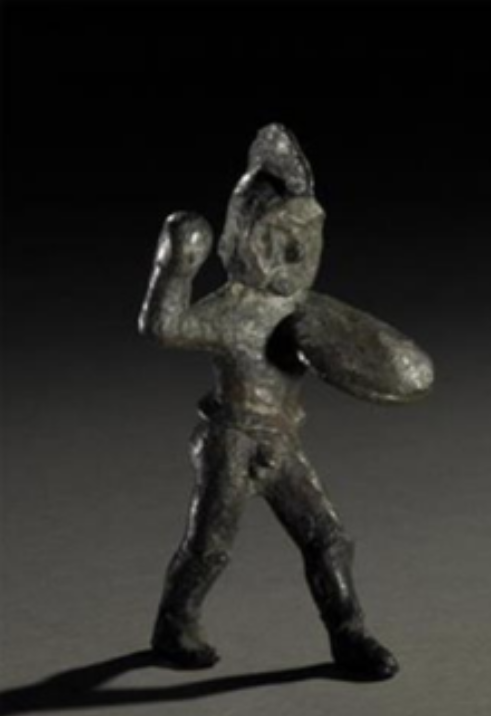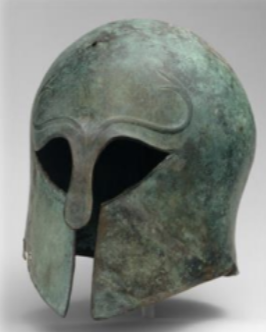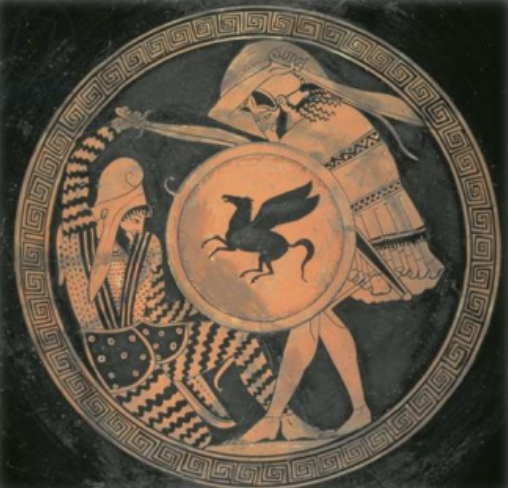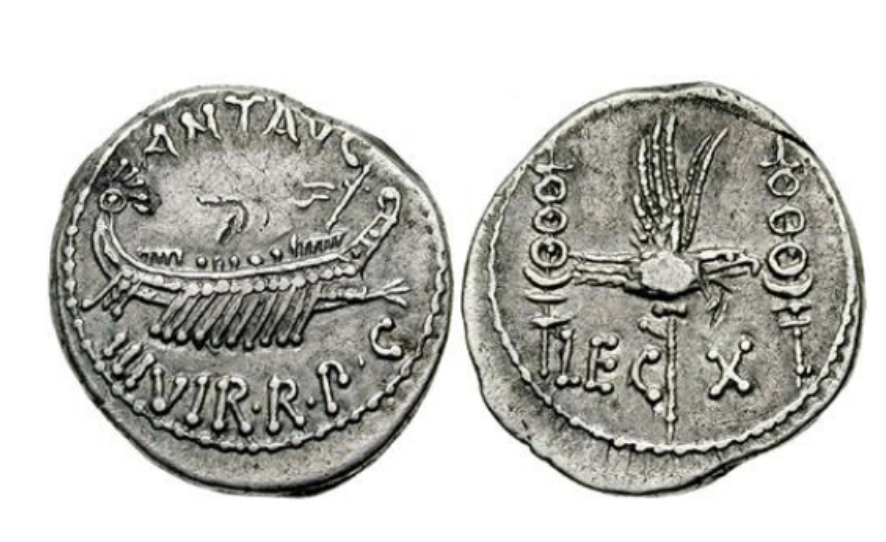Classics - War and Warfare Prescribed sources
1/6
Earn XP
Description and Tags
OCR Classics Paper 2 Prescribed Sources
Name | Mastery | Learn | Test | Matching | Spaced |
|---|
No study sessions yet.
7 Terms

Bronze Warrior Figure (6th Century BC)
A bronze warrior - Spartan in war
Originally would be a spear in his right hand giving us an idea of a thrusting motion a hoplite (Spartan soldier) would have done in Battle in the 6th century
Corinthian Style helmet which goes out of fashion the next century
Tilting his shield back suggesting it was heavy and offered protection but also required a large amount of effort to handle

Bronze Helmet of Corinthian Type - 460 BC
A type of ancient Greek helmet characterized by its distinctive full face coverage, flared cheeks, and a high-arched brow. It offered excellent protection for soldiers in battle and was commonly used by hoplites.
The inscription on the helmet said the helmet was a “spoil of victory” by the Argives against the Corinthians. The Argives dedicated it to Zeus at Olympia (it was common to thank the gods for a military victory)
Spartan
Herodotus,Histories, 7.102 - “First then, they will not under any circumstances accept terms from you which would mean slavery for Greece; secondly, they will fight you even if the rest of Greece submits. Moreover, there is no use in asking if their numbers are adequate to enable them to do this; suppose a thousand of them take the field – then that thousand will fight you, and so will anynumber, greater than this or less”
Herodotus' account of the Persian Wars, highlighting Greek determination to resist domination. It illustrates the idea of freedom versus subjugation, emphasizing their commitment to fight for autonomy.
Demaratus warns Xerxes about the courage of the Spartans when he was summoned as a key advisor. Xerxes laughed at this response because he believed that the Persians were far more powerful. For four days, there was a tense stand-off between the two sides
Spartan

Red Figure Kylix of a Persian and a Greek fighting, the Triptolemos Painter - 460 BC
A painting from a imagined scene from the Persian wars
A hoplite soldier must kill a fallen Persian soldier. They are both using swords which suggests they both left there weapons and has to use their secondary weapons. This source demonstrates the difference in armour between the 2 sides. The hoplite is heavily armoured with a round shield depicting a Pegasus and towers over the Persian who wears heavy clothing but no armour
Spartan
Herodotus, Histories, 7.226 - “Of all the Spartans and Thespians who fought so valiantly the lost signal proof of courage was given by the Spartan Dienekes. It is said that before the battle he was told by a native of Trachis that, when the Persians shot their arrows, there were so many of them that they hid from the sun. dienekes, however, quite unmoved by the thought of the strength of the Persian army, merely remarked: ‘This is pleasant news that the stranger from Trachis brings us: if the Persians hide the sun, we shall have our battle in the shade.’ He is said to have left on record other saying too, by which he will be remembered.”
Spartans knew that they were likely going to die at Thermopylae but they did not back away from fighting instead they fought with bravery. They fough with their swords hands and even teeth. This could show that Spartans never back away from warfare
Spartan
Herodotus, Histories, 7.228 - “Go tell the Spartans you who read, we took their orders and here lie dead”
A memorial - Spartan
Set up to commemorate the sacrifice the Spartans made at Thermoplyae. Herodotus was able to learn the names of all the Spartan soldiers who died as well as the name of their fathers. This memorial reflects their valour and the ultimate cost of their fight against the Persians, emphasizing the theme of honour in sacrifice.
This monument remained intact throughout the years as Pausanias who visited the site in the secondary century AD reported that a memorial was dedicated with the names of three-hundred men

Prescribed Source Mark Antony legionary denarius 32 BC Silver and copper Obverse: galley with banners at the prow Reverse: legionary eagle between two standards
A coin issued by Antony to his soldiers in the winer of 32/31 BC (during the period of tension between himself and ocavian)
The style of coin - a de